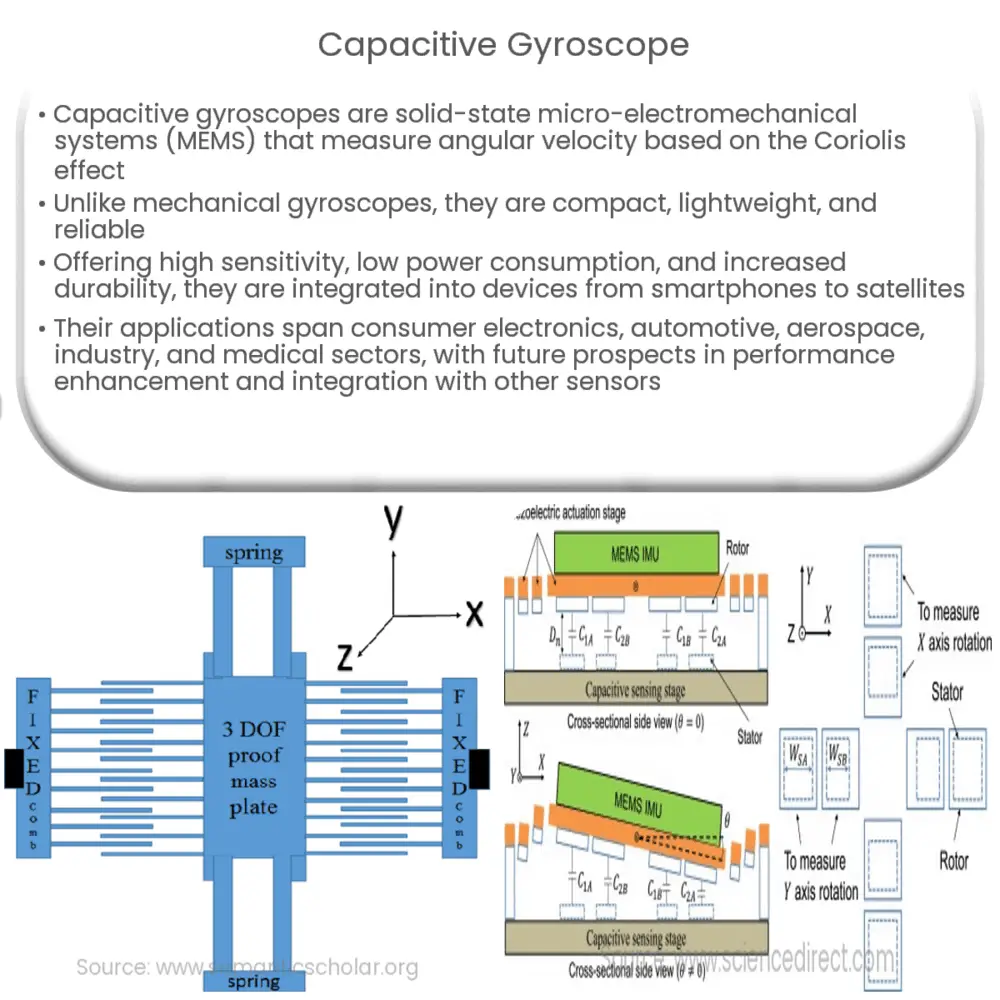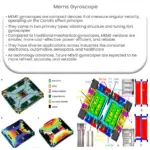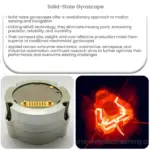Capacitive gyroscopes are solid-state MEMS devices that measure angular velocity, offering high sensitivity, low power consumption, and reliable performance in various applications.

Capacitive Gyroscope: Revolutionizing Inertial Sensing
In recent years, the development of motion sensing technology has become a vital component in various industries, such as aerospace, automotive, and consumer electronics. One of the most significant advancements in this field is the capacitive gyroscope. This article aims to provide an in-depth understanding of capacitive gyroscopes, their working principles, applications, and future prospects.
What is a Capacitive Gyroscope?
A capacitive gyroscope is a type of micro-electromechanical system (MEMS) that measures angular velocity or rotational motion. Unlike traditional mechanical gyroscopes that rely on spinning rotors to maintain a fixed orientation, capacitive gyroscopes are solid-state devices, which makes them more compact, lightweight, and reliable. The core sensing element of a capacitive gyroscope is a vibrating structure that changes its capacitance in response to an external rotation.
Working Principle of Capacitive Gyroscopes
The operational principle of capacitive gyroscopes is based on the Coriolis effect, a phenomenon that occurs in rotating systems. When a vibrating structure is subjected to an angular velocity, a Coriolis force is generated, which causes a secondary motion orthogonal to both the primary vibration and the rotation. This secondary motion alters the capacitance between the sensing electrodes, which can be measured and converted into an angular velocity signal.
Capacitive gyroscopes typically comprise a silicon substrate, a proof mass, and a set of comb-like electrodes. The proof mass is suspended above the substrate using thin beams, allowing it to move freely in a specific direction. When an alternating current (AC) is applied to the drive electrodes, the proof mass starts oscillating, creating a capacitance between the electrodes. The introduction of an angular velocity produces a Coriolis force, causing the proof mass to move in a direction orthogonal to its initial motion. This movement changes the capacitance between the sensing electrodes, which is detected and processed to determine the angular velocity.
Advantages of Capacitive Gyroscopes
Capacitive gyroscopes offer several advantages over their mechanical counterparts and other MEMS-based gyroscopes. Some of the key benefits include:
- Compact and lightweight: The solid-state design and small form factor of capacitive gyroscopes make them suitable for integration into various devices, ranging from smartphones to satellites.
- High sensitivity and accuracy: Capacitive gyroscopes can detect minute changes in capacitance, which translates to high sensitivity and accuracy in measuring angular velocity.
- Low power consumption: Since capacitive gyroscopes operate at a lower frequency than other MEMS-based gyroscopes, they consume less power, making them ideal for battery-powered devices.
- Reliability: The absence of moving parts in capacitive gyroscopes leads to increased reliability and reduced wear and tear over time.
Applications of Capacitive Gyroscopes
Due to their unique advantages, capacitive gyroscopes have found widespread use in a variety of applications, including:
- Consumer electronics: Capacitive gyroscopes are commonly used in smartphones, tablets, gaming controllers, and virtual reality (VR) headsets to track motion and enhance user experience.
- Automotive industry: In modern vehicles, capacitive gyroscopes help with stability control, collision avoidance systems, and navigation assistance.
- Aerospace and defense: In aircraft and satellite systems, capacitive gyroscopes provide precise attitude and heading information, ensuring accurate navigation and control.
- Industrial applications: Capacitive gyroscopes are used in robotics, automation, and unmanned aerial vehicles (UAVs) for precise motion control and stabilization.
- Medical devices: In medical equipment, such as surgical robots and patient monitoring systems, capacitive gyroscopes facilitate precise motion tracking and control.
Future Prospects of Capacitive Gyroscopes
As technology continues to advance, capacitive gyroscopes are expected to play an increasingly important role in the future of inertial sensing. Some potential developments include:
- Improved performance: Research and development efforts are underway to enhance the sensitivity, accuracy, and dynamic range of capacitive gyroscopes, making them suitable for even more demanding applications.
- Reduced size and cost: Advances in MEMS fabrication techniques may lead to further miniaturization and cost reduction of capacitive gyroscopes, broadening their accessibility and adoption in various industries.
- New materials: The exploration of novel materials, such as graphene and other 2D materials, could significantly impact the performance and reliability of capacitive gyroscopes, opening up new possibilities in inertial sensing.
- Integration with other sensors: Capacitive gyroscopes can be combined with other sensors, such as accelerometers and magnetometers, to form more sophisticated inertial measurement units (IMUs) that provide comprehensive motion tracking and analysis.
Conclusion
Capacitive gyroscopes have revolutionized the field of inertial sensing by offering high-performance, compact, and reliable solutions for a wide range of applications. As technology progresses, capacitive gyroscopes are poised to become even more integral to various industries, from consumer electronics to aerospace and defense. By understanding the principles behind capacitive gyroscopes, as well as their advantages, applications, and future prospects, it becomes clear that this technology has the potential to significantly impact our daily lives and the way we interact with the world around us.




